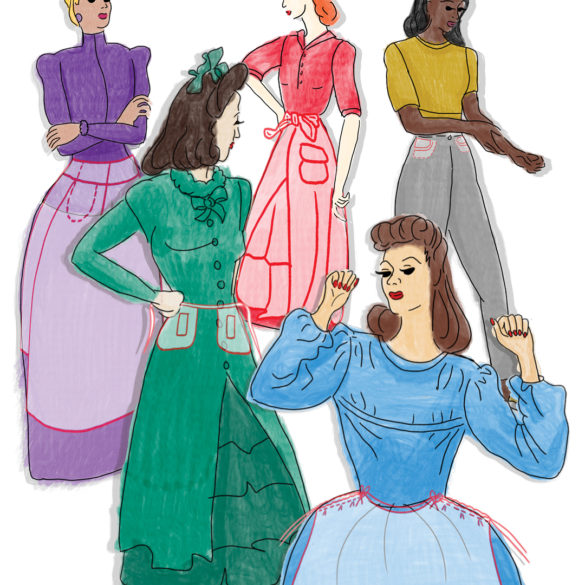A look into why women’s clothing has a lack of real pockets.
We tend to think that pockets are just that, pockets. We have them or we don’t. But women struggle with the lack of pockets more than men, and the reason why isn’t just an issue of aesthetics.
Freedom Smith, a Ball State University student, explains her stance on pockets.
“I like pockets, especially on dresses, because of how roomy they are. I don’t use a purse so I rely heavily on pockets to carry my stuff around. I hate when pockets seem like they’re going to be big and roomy but turn out to be fake,” Freedom says.
She says she doesn’t use purses because of how bulky they are, so pockets are a big deal in her decision process when it comes to buying clothing.
“If I find something I really like and it doesn’t have pockets, then I’ll be on the fence about if I should get it or not, but if it has pockets and I was on the fence, I usually just end up getting it because it had functional pockets,” Smith says.
Pockets for women have a history dating back to medieval times. Back then, both men and women wore pouches tied around their waist to carry their belongings, and by the 17th century, these pouches were sewn into clothing. Men were able to easily access these new pouches in the lining of their clothes, but women had to do it under their garments, which meant unless they were fully undressed, they couldn’t get to those items.
As fashion evolved in the 1790’s, pockets for women’s dresses began to disappear altogether. Women began using purses, but these purses could fit only a coin and handkerchief inside them. The reasoning behind it, as you probably guessed, was because their husbands would carry the money and everything else deemed as “important.” Women were expected to stay at home and do all the housewife duties at this point.
Women began wearing trousers in the 1920s when their husbands were sent off to war and they had to step in to take over their roles in the workforce. Women began to work in factories, construction, and many other industrial jobs that would cause great risks had they worn their “normal” dress, which included dresses and skirts that could easily get caught in machines.
During the time women were doing these jobs, trousers had deep pockets, so women just wore men’s trousers. However, post-war fashion reverted back to focusing on slimming women’s figures, and this led to the removal of pockets on women’s pants.
Linda Pryzybyszewski, history professor at Notre Dame, says she doesn’t think the reason why women don’t have pockets is sexist.
I doubt it was sexist, it is more like pockets started out as purses, then women started carrying purses, and their clothing has gotten incredibly tight lately,” Pryzybyszewski says.
However, it looks like the purse industry is starting to decline in the United States. A 2019 report by market research firm the NPD Group found that sales of handbags were down 20% in the first 8 months of the year compared to 2016, signifying a big change in consumer trends. According to the report, this may be due to factors like preferences shifting to more functional clothing items like activewear, the growth of the resale market, and a brand’s overall engagement with social issues.
According to Audrey Robbins, fashion professor at Ball State, the controversy surrounding women’s pockets may soon be a thing of the past as the market moves more toward gender-neutral clothing.
“The general silhouette created for men vs. women is quite different. As we are starting to see genderless clothing creations, we are moving away from standard designs that include large pockets in menswear and/or lack of in womenswear,” she says.
So the next time you go to shove your phone into your front pocket and it hits the ground and realization sets in that you have fake pockets yet again, take heart that someday soon, deep pockets may be the norm for all genders.





